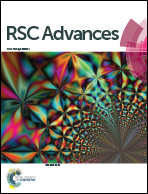Structure–property relationships in super-toughened polypropylene-based ternary blends of core–shell morphology
Abstract
Structure–property relationships in PP/EPDM-g-MA/PA6 (70/15/15) ternary blends were studied in detail. PP-based reactive ternary blends with greatly improved impact strength were obtained via manipulation of phase morphology by applying different processing methods. SEM and TEM techniques were employed to study the phase morphology, which was shown to have a significant effect on the different properties, especially a tremendous improvement in the impact toughness. Reactive ternary blends showed core–shell morphology (core: PA6, shell: EPDM-g-MA in PP matrix) with quite different dispersed structures, in the form of mainly individual core–shells, clusters of core–shell particles, or percolation of clusters. Phase compatibility and thermal properties of the blends were studied by DMA and DSC analysis. A super-toughened PP-based reactive ternary blend with an impact strength much higher than the PP/EPDM (70/30) binary blend and about 15 times higher than that of pure PP was achieved. This was ascribed to a unique “percolated” structure of core–shell particles in the matrix, indicating the importance of the dispersion state of modifier particles in enhancing the impact strength. Fracture behavior and toughening micro-mechanisms were rationalized by post-mortem fractography of the impact-fractured surfaces. Synergistic effects of the interconnected structure and suitable interfacial adhesion together with cavitation and irreversible plastic growth of micro-voids caused massive shear yielding of the matrix material in the super-toughened blends.


 Please wait while we load your content...
Please wait while we load your content...